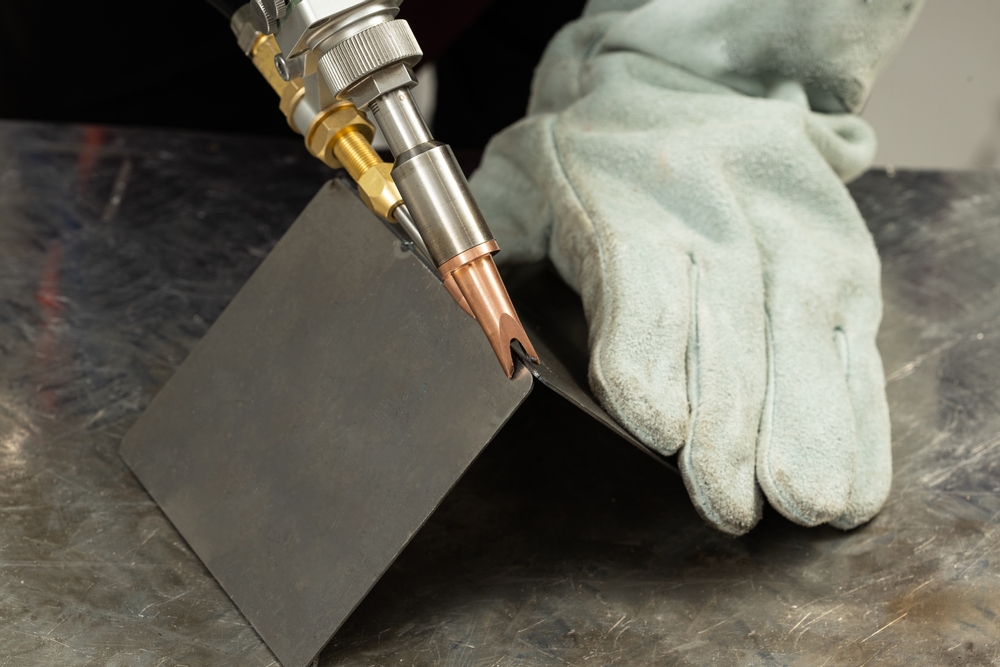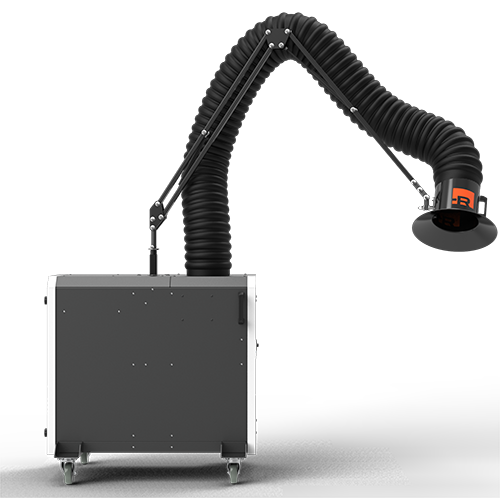What is Laser Welding?
Laser welding is a high-precision process that uses a concentrated laser beam to fuse materials together. It is highly accurate, fast, and capable of creating strong welds with minimal heat-affected zones, making it suitable for various industries including automotive, aerospace, and medical devices. The process can handle different materials like metals and plastics, and can be fully automated.
How do fume extractors protect laser welders?
Laser welding fume extractors play a crucial role in protecting workers from harmful emissions that are a byproduct of the welding process. These devices work by capturing and filtering out the toxic particles and gases produced during laser welding before they can spread in the air and be inhaled by workers.
Are there established safety regulations for laser welding?
- Laser welding adheres to the same stringent regulations as other welding techniques. These processes generate emissions regulated by the Occupational Safety and Health Administration (OSHA), which aim to reduce workers’ exposure to potentially harmful airborne dust and fumes. Non-compliance, leading to unsafe work conditions, can result in substantial penalties and legal implications.
- Additionally, the Environmental Protection Agency (EPA) stipulates regulations for hazardous emissions resulting from laser welding and similar industrial processes. A robust weld fume collection system is instrumental in aligning with these worker safety and environmental norms. Furthermore, adhering to the American National Standards Institute (ANSI) Z136 series, which specifically addresses laser safety, is key to ensuring a comprehensive and compliant safety protocol.
Why is a HEPA filter important to use with a laser welder?
- A properly rated HEPA (High Efficiency Particulate Air) filter is a crucial component of these extraction systems. These filters are designed to capture 99.999% of particulates that are 0.3 microns in diameter, effectively removing the vast majority of harmful particles from the air. This includes many of the metallic fumes produced in laser welding.
Once the air has passed through the HEPA filter, it is safe to be returned to the workplace environment, vastly reducing the amount of airborne pollutants that workers are exposed to. This greatly reduces the risk of respiratory problems and other health issues associated with exposure to welding fumes.
Quality Solutions for Laser Welding Fumes and Particulates
Filtrabox provides solutions for controlling dust and fumes for manufacturers employing laser welding. This includes our premier dust collector for industrial use, the Filtrabox Weld-R fume extractor. The Weld-R pushes the boundaries of air filtration technology, elevating efficiency and minimizing maintenance demands. Whether your requirement is dust management for a single laser welding station or a comprehensive solution for managing fumes and dust across various applications throughout the facility, we are equipped to meet your needs.
Purchasing a laser welder? Here’s why you need a fume extractor.

Workplace Safety
Investing in a laser welding fume extractor is not merely a smart business move, but also a crucial measure in safeguarding the health and wellbeing of your employees. The welding environment, while a vital part of many industries, poses significant health risks, the severity of which cannot be overlooked.
Among these risks are the carcinogenic properties of welding fumes. According to the International Association for Research on Cancer (IARC), welding fumes have been identified as a known carcinogen that can lead to lung cancer. Ignoring this peril can potentially expose your company to significant health, ethical, and legal complications in the future.
Moreover, the health impact of welding fumes extends beyond the long-term risk of cancer. Immediate effects from certain fumes may include metal fume fever, stomach ulcers, kidney damage, and nervous system damage, according to the Occupational Safety and Health Administration (OSHA). These health issues can cause serious discomfort and even disability among your workforce, affecting their productivity and, more importantly, their quality of life. Furthermore, sustained exposure can lead to symptoms akin to Parkinson’s disease.
Investing in a laser welding fume extractor is a proactive measure to ensure that your employees are protected from these substantial risks. By implementing this solution, you contribute to creating a safer, healthier work environment, which leads to more productive employees and demonstrates your commitment to their wellbeing. It’s an investment not only in the functionality and efficiency of your operations but also in the most valuable asset your company possesses – its people.

Filtration means Efficiency
Maintaining a clean environment is crucial to creating high-quality welds for several reasons:
Elimination of Contaminants: Any contaminants such as dust, oil, or rust on the materials to be welded can introduce impurities into the weld, weakening its structural integrity and causing defects such as porosity (tiny holes in the weld), inclusions (unwanted particles in the weld), and undercutting (a groove melted into the base metal adjacent to the weld and left unfilled).
Increased Precision and Efficiency: In laser welding, a clean, fume-free environment ensures that the laser beam isn’t refracted or deflected by particles in the air. This allows for a focused, high-energy beam that can produce accurate and efficient welds.
Improvement of Safety: Besides affecting weld quality, a clean environment is also safer for the operator. Welding in a dirty environment can cause harmful fumes and gases that can lead to serious health issues.
Protection of Equipment: Accumulated dirt and grime can also damage welding equipment, leading to costly repairs and downtime. Regular cleaning helps prolong the life of the equipment and maintains its performance.
Consistent Quality: A clean work environment helps ensure the consistency of welds. When the welding environment is controlled and clean, it eliminates variables that could affect the welding process, leading to a higher quality and more uniform product.
The importance of cleanliness in the welding environment cannot be overstated, as it significantly impacts the quality, safety, and efficiency of welding operations.
Filtrabox Weld-R
Ready to revolutionize your welding experience with Weld-R? Dive deeper and discover the game-changing benefits of our advanced welding solutions. Don’t wait – your next level of productivity and efficiency is just one click away with Weld-R!




